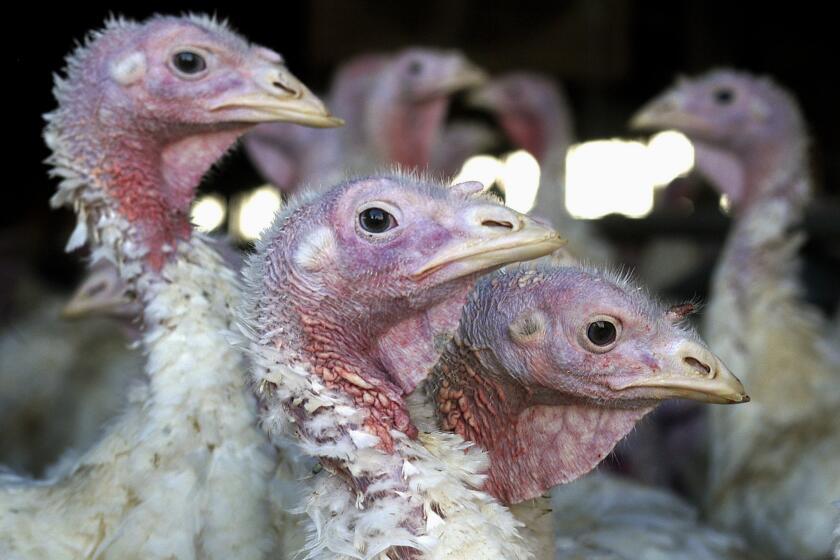First bird flu cases in wildfowl reported in Los Angeles County this year

- Share via
Los Angeles County health officials announced that seven geese and a heron have tested positive for avian flu, marking the first time the disease has been detected in the county this year.
Officials caution that while the risk to the general public is low, human transmission is possible.
Roughly 47 million birds have died this year amid a nationwide outbreak of avian influenza, according to the U.S. Department of Agriculture, with an estimated 42 states impacted. Wild birds can carry and transmit the bird flu to birds that people keep as pets or livestock. Transmission is likely to spread with migrating birds.
The cases reported in L.A. County are part of the highly pathogenic avian influenza, or H5N1, outbreak. Three Canada geese and a black-crowned night heron tested positive in Long Beach, three more Canada geese tested positive in the city of Los Angeles and one Canada goose tested positive in Cerritos, the Los Angeles County Department of Parks and Recreation said.
A highly infectious bird flu that has felled millions of birds globally is in California. Experts worry it could affect our food supply.
The disease is spread among birds through direct contact or indirectly through clothing, shoes, vehicles, rodents, insects, food, water, feathers and other means. Birds shed the virus through mucus, droppings and saliva, according to county officials.
Infection among humans is rare, but not impossible.
Humans can inhale the virus in droplets or dust, or catch it through exposure to the mouth, eyes or nose. That can include coming into contact with an infected bird or contaminated surface, health officials said. Human-to-human transmission is very rare, but health officials caution that avian influenza viruses can change and learn to spread between people. It’s important to be mindful of human infection and person-to-person spread.
- Park officials caution people to not feed wild birds, including geese, ducks and swans.
- Avoid touching birds, even if they look healthy. Birds can be infected with avian flu and not show any sign, according to health officials.
- Do not touch surfaces with bird droppings or touch feathers.
- Do not pick up sick, dying or dead wild birds.
- Keep pets away from wild birds.
- For households with poultry, health officials advise keeping a clean environment and disinfecting shoes before and after handling birds.
Typically, bird flu is spread among ducks, geese or other water birds, but the current H5N1 outbreak has spread to a wider variety of birds.
Bird flu has returned to the Midwest earlier than authorities expected after a lull of several months.
An emu that went viral earlier this year has contracted the bird flu, according to Taylor Blake, the bird’s owner. Emmanuel the emu became famous for its curious habit of interrupting Blake’s TikTok videos. The emu has suffered nerve damage to its legs, Blake wrote in a social media update on Saturday.
Roughly 50 million birds have been culled in Europe due to the spread of the virus. And on the remote Isle of Man, the British government confirms that the virus has spread beyond waterfowl.
More to Read
Sign up for Essential California
The most important California stories and recommendations in your inbox every morning.
You may occasionally receive promotional content from the Los Angeles Times.












